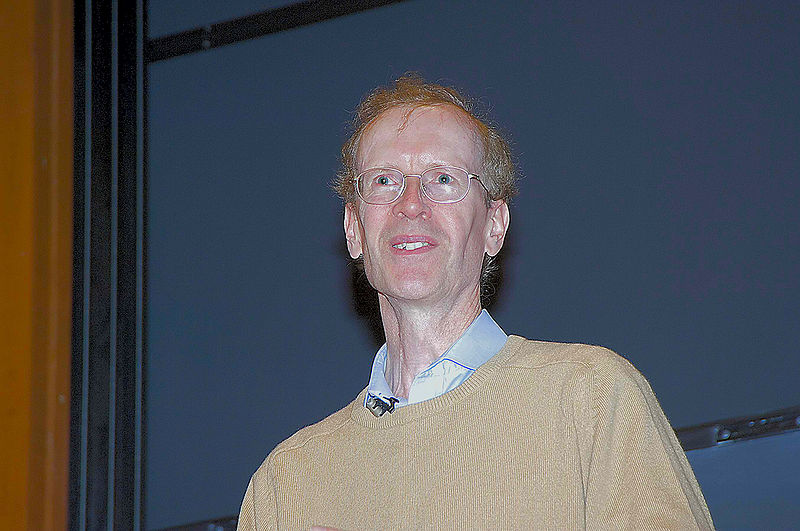<Back to Index>
- Mathematician Sir Andrew John Wiles, 1953
- Sculptor Gustav Vigeland, 1869
- Prime Minister of the United Kingdom George Canning, 1770

Sir Andrew John Wiles KBE FRS (born 11 April 1953) is a British mathematician and a professor at Princeton University, specializing in number theory. He is most famous for proving Fermat's Last Theorem.
Andrew Wiles's father was Maurice Frank Wiles (1923-2005), the Regius Professor of Divinity at the University of Oxford and his mother Patricia Wiles (née Mowll). His father worked as the Chaplain at Ridley Hall, Cambridge, for the years 1952-55. Andrew Wiles was born in Cambridge, England, in 1953, and he attended King's College School, Cambridge, and The Leys School, Cambridge. Wiles discovered Fermat's Last Theorem on his way home from school when he was 10 years old. He stopped by his local library where he found a book about the theorem. Puzzled by the fact that the statement of the theorem was so easy that he, a ten-year old, could understand it, he decided to be the first person to prove it. However, he soon realized that his knowledge of mathematics was too small, he abandoned his childhood dream, until 1986, when he heard that Ribet had proved Serre's ε-conjecture and therefore established a link between Fermat's Last Theorem and the Taniyama-Shimura conjecture.
Wiles earned his bachelor's degree in mathematics in 1974 after his study at Merton College, Oxford, and a Ph.D. in 1980, after his research at Clare College, Cambridge. After a stay at the Institute for Advanced Study in New Jersey in 1981, Wiles became a professor at Princeton University. In 1985-86, Wiles was a Guggenheim Fellow at the Institut des Hautes Etudes Scientifiques near Paris and at the École Normale Supérieure. From 1988 to 1990, Wiles was a Royal Society Research Professor at Oxford University, and then he returned to Princeton. In October 2009 it was announced that Wiles would once again become a Royal Society Research Professor at Oxford in 2011.
Wiles's graduate research was guided by John Coates beginning in the summer of 1975. Together they worked on the arithmetic of elliptic curves with complex multiplication by the methods of Iwasawa theory. He further worked with Barry Mazur on the main conjecture of Iwasawa theory over the rational numbers, and soon afterward, he generalized this result to totally real fields.
Starting in the summer of 1986, based on successive progress of the previous few years of Gerhard Frey, Jean-Pierre Serre and Ken Ribet, Wiles realised that a proof of a limited form of the modularity theorem might
then be in reach. He dedicated all of his research time to this problem
in relative secrecy. In 1993, he presented his proof to the public for
the first time at a conference in Cambridge. In August 1993 however, it
turned out that the proof contained a gap. In desperation, Andrew Wiles
tried to fill in this gap, but found out that the error he had made was
a very fundamental one. According to Wiles, the crucial idea for
circumventing, rather than closing this gap, came to him on 19
September 1994. Together with his former student Richard Taylor,
he published a second paper which circumvented the gap and thus
completed the proof. Both papers were published in 1995 in a special
volume of the Annals of Mathematics.
His proof of Fermat's Last Theorem has stood up to the scrutiny of the world's mathematical experts. Wiles was interviewed for an episode of the British Broadcasting Corporation's documentary series Horizon that focused on Fermat's Last Theorem. This was renamed "The Proof", and it was made an episode of the Public Broadcasting Service's television science TV series Nova. Since 1994 he has been Eugene Higgins Professor at Princeton and is currently Chair of the Mathematics Department. He is a foreign member of the United States National Academy of Sciences since 1996 (he remains a citizen of the United Kingdom).
Wiles is married to Nada Canaan Wiles, who earned her Ph.D. in microbiology from Princeton University in New Jersey, and they have three daughters: Clare, Kate and Olivia.